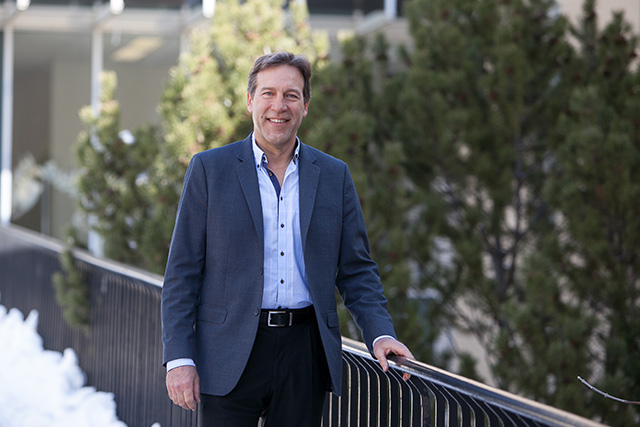
LFCE offers a reproductive network
You might not think it to look at them, but cows can provide an excellent parallel to a woman’s reproductive system.
By HenryTye GlazebrookDr. Gregg Adams, professor of veterinary biomedical sciences at the University of Saskatchewan’s (U of S) Western College of Veterinary Medicine (WCVM), says he and his team have studied the bovine reproduction system to better understand human reproduction for many years.
“We’ve actually used the cow as a model, as much as you’d use a mouse model, for understanding how the ovaries work and how follicles grow. That turned out to be a very good model for what happens in humans — what happens in women,” says Adams.
“We’ve found out that the bovine model is probably the most applicable model for understanding human reproduction and for testing new protocols for human fertility and contraception.”
During his 35-year career, Adams’ research interests in basic and applied aspects of reproductive science and medicine have had a significant impact on animals and people. One of his many projects is a patented program of cattle synchronization that has grown to be adopted all over the globe. These days, Adams is looking forward to the Livestock and Forage Centre of Excellence (LFCE) and how it can advance his ongoing work.
The LFCE is a large undertaking that will unite all areas of livestock research, education and extension at the U of S. The result, Adams explains, will be an institution that yields greater studies and greater partnerships for the overall benefit of the university.
“Bringing together the expertise of our researchers and the experience of producers is just a great thing. We can’t be all things to all people, but with a team like that, we’d have truly a national if not international presence. We would have the latest information and collaboration on things like health and disease surveillance, reproductive management and programmed breeding practices, nutrition, water and forage management practices, and manure handling systems,” says Adams.
What sets the LFCE apart is its grand scope in creating a network of interdisciplinary research and communication connections. For Adams, a network of this magnitude means huge benefits for researchers like himself and his colleagues.
“We’ve had the Western Beef Development Centre over here, the College of Agriculture and Bioresrouces over there, the WCVM over here, and we’ve all acted independently with our own levels of expertise. But this would provide a focal point … and allow us to interact and make it a lot more likely that we would collaborate,” he says.
Adams emphasizes the centre’s potential to be a major draw for students considering the U of S as an option for their studies. Many other institutions, he says, simply do not have that level of resources at their disposal to set themselves apart from the competition.
Since the LFCE was first announced in 2015, Adams has discussed the project with a number of people in rural Saskatchewan. In his experience, their feedback has shown a warmth and enthusiasm for the project and for the U of S.
“I think one thing that struck me is how welcoming the communities have been,” says Adams. “They have been really supportive … they seem to like the university as a neighbour and are really supportive of this [project].”
